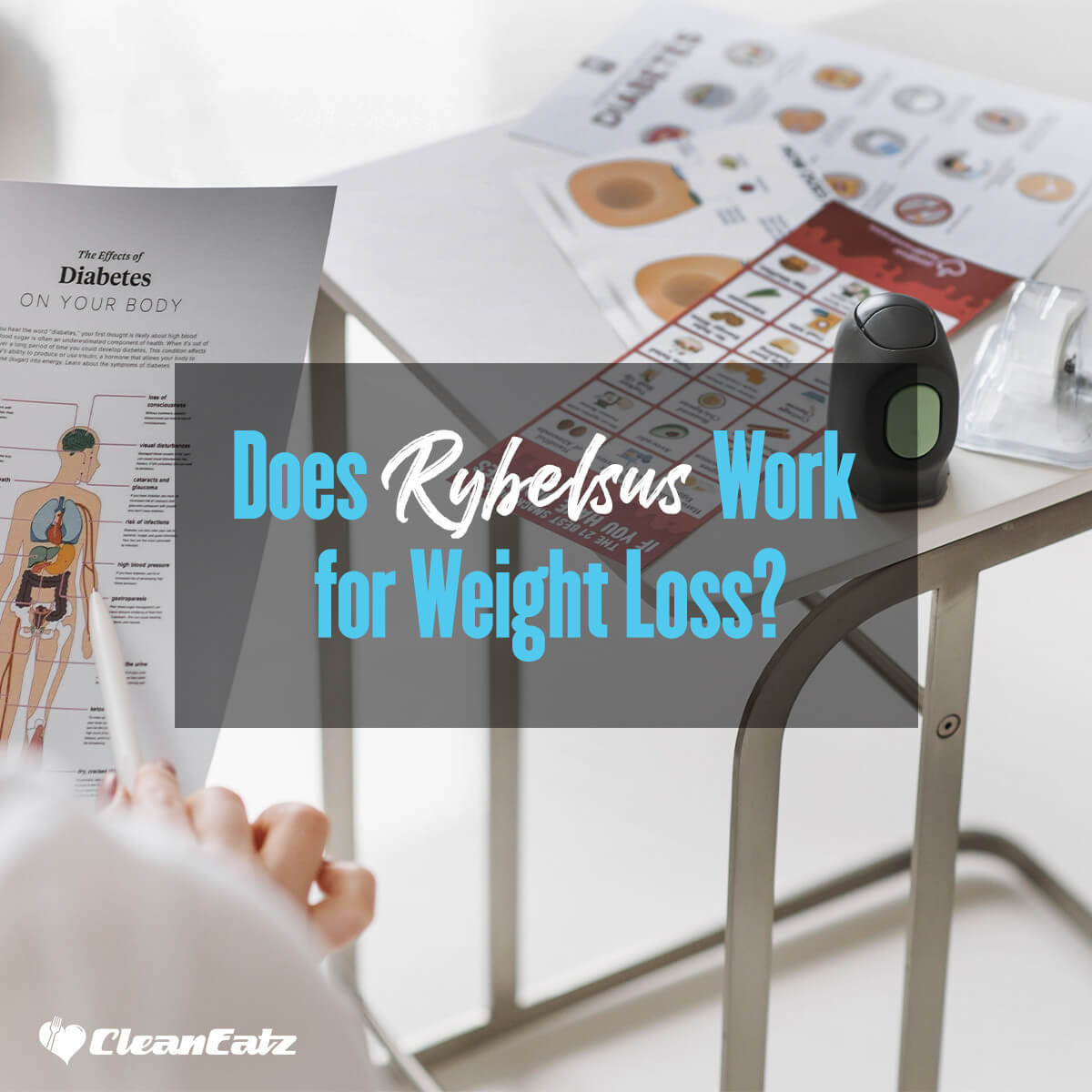
Carb Cycling Your Way to Better Health: A Comprehensive Guide to the Carb Cycling Diet
Dorothy M. Shirnyl, RND
Nutrition
|
Weight Loss
|
Healthy Lifestyle
8 minute read
Are you looking to optimize your diet and boost your performance without giving up your favorite carb-rich treats? Look no further than the carb cycling diet, an innovative and flexible approach to nutrition that has taken the fitness world by storm.
In this comprehensive guide to the carb cycling diet, we'll delve into the science behind this popular nutrition strategy, exploring its benefits and how to implement it. By the end of this article, you'll have a solid understanding of carb cycling and be equipped to decide whether it's the right approach for you. So, buckle up and get ready to ride the carb-cycling wave to better health and fitness!
What is Carb Cycling Diet?
Carb cycling is a strategic nutrition approach that alternates between high and low-carbohydrate intake periods. By doing so, it aims to maximize the benefits of both high-carb and low-carb diets, helping individuals achieve their specific fitness goals, whether it's fat loss, muscle gain, or improved athletic performance.
Carb cycling strategically manipulates carbohydrate intake to support various fitness goals, from weight loss to muscle gain and everything in between.
Carb cycling has gained a dedicated following among athletes, bodybuilders, and fitness enthusiasts alike. Its popularity stems from its ability to provide the best of both worlds: the fat-burning benefits of low-carb diets and the muscle-building potential of high-carb diets. By strategically harnessing the power of carbohydrates, carb cycling offers an appealing alternative to more restrictive diets, allowing you to enjoy your favorite carb-containing foods while still achieving your fitness goals.
How Does Carb Cycling Diet Work?
The fundamental principle behind carb cycling is to optimize hormone levels, fuel workout performance, and improve recovery by timing carbohydrate intake according to your body's needs. On high-carb days, you'll consume more carbohydrates, which can help replenish glycogen stores, support muscle growth, and boost energy levels for intense workouts. On low-carb days, you'll reduce your carbohydrate intake, encouraging your body to burn fat for fuel and potentially improving insulin sensitivity. Carb cycling aims to create an ideal environment for reaching your fitness goals by strategically cycling between high- and low-carb days.
Common Variations of Carb Cycling Diet
There are several ways to implement carb cycling, and your specific approach will depend on your personal goals, preferences, and lifestyle. Some common variations include:
- Weekly Carb Cycling: In this approach, you alternate between high-carb and low-carb days throughout the week, with a predetermined number of each based on your goals and workout schedule. For example, you may choose to have three high-carb days and four low-carb days each week.
- Targeted Carb Cycling: This method involves consuming higher amounts of carbs on workout days and reducing carb intake on rest days. This approach ensures that your body receives the necessary fuel for intense workouts while still promoting fat loss on rest days.
- Cyclical Ketogenic Diet (CKD): Cyclical Ketogenic Diet is a more extreme form of carb cycling that combines a ketogenic diet with periodic high-carb days, typically once per week or every two weeks. This approach aims to maintain the benefits of ketosis while preventing potential side effects such as decreased performance or muscle loss.
Benefits of Carb Cycling Diet
Are you looking for a flexible and effective approach to improve your overall health and achieve your fitness goals? The carb cycling diet might be the solution you've been searching for.
Here are the potential benefits carb cycling diet offers:
Improved weight loss and body composition
Carb cycling can be an effective tool for weight loss and improving body composition. Reducing carb intake on low-carb days encourages your body to tap into its fat stores for energy. Additionally, cycling carbohydrates can help prevent the metabolic slowdown that can occur with long-term caloric restriction, making it easier to maintain weight loss progress in the long run.
Enhanced athletic performance and muscle growth
One of the primary benefits of carb cycling is its ability to support athletic performance and muscle growth. High-carb days provide the necessary fuel for high-intensity workouts and promote muscle glycogen replenishment, which can aid in recovery and growth. By strategically timing high-carb days around your most intense workouts, you can ensure your body is primed for peak performance.
Increased insulin sensitivity and metabolic flexibility
Carb cycling can help improve insulin sensitivity and metabolic flexibility, both of which are essential for overall health and wellness. Alternating between high-carb and low-carb days can train your body to efficiently switch between using carbohydrates and fats for fuel, improving its ability to adapt to various metabolic demands. Furthermore, improving insulin sensitivity can lower the risk of developing chronic conditions like type 2 diabetes and metabolic syndrome.
Easier adherence compared to strict low-carb diets
One of the key advantages of carb cycling is that it offers a more sustainable and flexible approach to nutrition than strict low-carb diets. By incorporating high-carb days, you can still enjoy your favorite carbohydrate-rich foods in moderation, making it easier to stick to your diet plan without feeling deprived. This flexibility can ultimately lead to greater long-term success, as it's easier to adhere to a diet that doesn't require you to completely eliminate your favorite foods.
Mastering the Art of Carb Cycling
Whether you're aiming for weight loss, improved athletic performance, or overall well-being, these steps will empower you with the knowledge and tools to navigate the intricacies of carb cycling with confidence.
Determining your high-carb, low-carb, and no-carb days
The first step in implementing carb cycling is to establish a schedule for your high-carb, low-carb, and no-carb days. This will largely depend on your personal goals, workout schedule, and lifestyle. As a general guideline, high-carb days should coincide with your most intense workout days, while low-carb and no-carb days should fall on rest days or days with lighter workouts. Experiment with different schedules and adjust as needed to find the right balance that works for you.
Planning your meals and macronutrient ratios
Once you've established a carb cycling schedule, the next step is to plan your meals and macronutrient ratios. On high-carb days, aim to consume a higher proportion of your calories from carbohydrates while keeping protein and fat intake moderate. On low-carb days, prioritize protein and healthy fats while reducing your carb intake. Consider your daily caloric needs and adjust your macronutrient ratios accordingly.
Incorporating the right types of carbs
Not all carbs are created equal, and choosing the right types of carbs to support your carb cycling goals is essential. On high-carb days, focus on consuming complex carbohydrates, such as whole grains, legumes, and starchy vegetables, as they provide a steady release of energy and are rich in fiber and nutrients. Opt for nutrient-dense, low-glycemic carbs like leafy greens, non-starchy vegetables, and low-sugar fruits on low-carb days.
Adjusting carb cycling to fit your goals and lifestyle
Carb cycling is a flexible approach to nutrition that can be adapted to suit your unique goals and lifestyle. If you do not see the desired results, don't be afraid to adjust your carb cycling plan. This may involve tweaking your macronutrient ratios, changing the frequency of high-carb and low-carb days, or experimenting with different types of carbs. Remember, the key to carb cycling success is finding a plan that works best for you and is sustainable in the long run.
Clean Eatz Kitchen: Your Carb Cycling Ally
To make your carb cycling journey even more seamless and enjoyable, consider Clean Eatz Kitchen as your ally in achieving success. Offering a wide range of delicious, nutritionally balanced meals tailored to your dietary preferences and goals, Clean Eatz Kitchen can help you easily adhere to your carb cycling plan. Their expert chefs and nutritionists craft high-quality meals that balance macronutrients, allowing you to focus on your health and fitness objectives without the hassle of meal planning and preparation. With Clean Eatz Kitchen, you're just a few clicks away from carb cycling success!
Final Thoughts
Carb cycling is an innovative and flexible dietary approach that has helped many individuals achieve their health and fitness goals. By understanding the potential benefits, drawbacks, and considerations, you can decide whether carb cycling is right for you. If you decide to give it a try, remember to consult a healthcare professional for guidance, listen to your body, and make adjustments as needed. With dedication and persistence, you can unlock the potential of carb cycling and enjoy a healthier, more balanced lifestyle.
FAQ
Is carb cycling suitable for everyone?
Carb cycling can be effective for many individuals, but it may not be suitable for everyone. It is best suited for those who have a basic understanding of nutrition, are physically active, and have specific fitness goals like weight loss or muscle gain.
How do I start carb cycling?
To begin carb cycling, determine your daily caloric needs and macronutrient ratios based on your goals. Plan high-carb and low-carb days accordingly, focusing on whole, nutrient-dense foods. Always consult with a healthcare professional or registered dietitian before starting any new diet.
Can carb cycling help with weight loss?
Yes, carb cycling can aid in weight loss by creating a calorie deficit on low-carb days and supporting physical activity on high-carb days. It can also prevent metabolic adaptation, often experienced with prolonged calorie restriction diets.
Are there any potential drawbacks to carb cycling?
Carb cycling may not be suitable for those with certain medical conditions or individuals who struggle with disordered eating patterns. Additionally, some people may find the cycling process challenging to follow consistently.
Related Articles
Quick and Healthy Fish Dishes for a Light Dinner
11 minute read
Does Rybelsus for Weight Loss Work?
8 minute read



